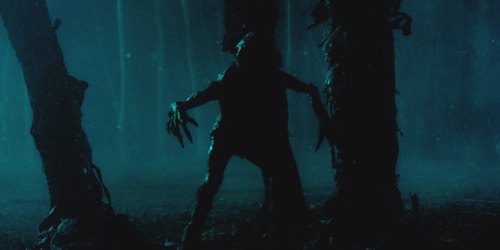
The Upside Down World of Digital Fundraising
The following post was originally published on LinkedIn on October 31, 2016.
Jeremy Haselwood is Senior Director of Digital Strategy for TrueSense Marketing, with a specific focus on serving our Salvation Army clients.
***
(NOTE: If you haven’t watched Stranger Things on Netflix yet, then this blog may have some spoilers. Read it anyways!)
It’s the 1980s, and fundraising is pretty rad. Direct mail is killing it. Nonprofits send out a mail piece, and can easily predict how much money they’ll get in return. It’s like printing money before the rise of ATMs. Donors have a single way to give (via check a few times a year), and it goes like this: They get the mail piece, pull out the ol' checkbook, tear it from the perforation, lick the envelope, lick the stamp, put it in the mailbox, raise the flag. Done. Life was so simple in the '80s world of fundraising.
[Cue intro music from the Netflix series Stranger Things]
Since the 2000s, nonprofits have officially entered "The Upside Down" when it comes to digital fundraising. This is an alternative, parallel world to the traditional direct mail paradigm of fundraising. It’s scary and fraught with darkness, unpredictability, and a monster lurking in the shadows. However, if you conquer it, you are a hero that is saving communities and making a difference in the world. The following are 5 ways that digital fundraising is like The Upside Down:

Digital fundraising mirrors direct mail
Most nonprofits that have been around for a while have a clear understanding of direct mail, but don’t quite have a grasp on digital. Though differences exist, there are also many similarities. For example, both make money, both require powerful messaging, both can be segmented to more accurately appeal to your target audience, and both arrive in mailboxes (physical and digital). Interestingly enough, countless case studies have proven that, when both direct mail and digital work together as part of a donor ecosystem, organizations generate even more revenue and amplify their impact. The digital donor and the direct mail donor don’t have to live in separate worlds.

Uncertainty
Cause-driven nonprofits exist to make a positive difference in the world. They are powered by passion and are outcome-oriented. Marketing is a function that they have to do, but not necessarily know how to do. Therefore, the expertise is concentrated around the cause, and not often around how to generate revenue to fuel the cause. Add in digital fundraising with all the different channels (SEM, website, social media, text, etc.), processes, and technology, and you have a frightening and intimidating monster in mix. There’s an uncertainty about how to wrangle in this monster and still keep the lifeblood of your organization pumping fearlessly. And though uncertain, this world seeks to be understood. 
You can’t ignore it
And speaking of monsters — digital fundraising, though scary and misunderstood at times, cannot be ignored. In truth, digital is actually no monster at all, but a hero ... if you empower it. If your organization does not pay attention to it, though, destruction is imminent, and doors will shudder. This is because donor trends are shifting, and more people want and expect to give via digital channels. Sure, direct mail is still king and will be for a while; however, nonprofits not positioned to serve donors through digital will lose ground and funding to those that do. The moral? Pay attention and act now, or suffer later. It’s simple, really.

Donors are trapped in the Upside Down, and sending you signals
Your donors have entered a digital world that they did not agree to join. Save them! They constantly let you know they are in this world. They are liking cat videos on social media, communicating with “textese” via text messages, checking emails at stoplights, and surfing the web from smartphones while their laptop is on their lap. It’s up to your organization to be brave, go into the world, find them, and bring them back. They are communicating, but are you listening?

You have help
Just as the character Eleven in Stranger Things was instrumental in understanding The Upside Down, nonprofits have help understanding the digital world as well. There are consultants, agencies, articles, conferences, blogs, and more resources that exist to arm nonprofits with the information they need to be successful. Nonprofits don’t have to be alone in The Upside Down. They must have the ability to focus on their passion and partner with expertise. When this doesn’t happen, time is wasted and impact is delayed. Sometimes, the difference of a day for those relying on your nonprofit is literally the difference of life and death. The faster your organization gets help understanding The Upside Down world of digital fundraising, the quicker you can be that difference to those who need it.
Looking back, the '80s were filled with nostalgia and perceived simplicity. Today’s world of fundraising is more intricate and fast-paced. It takes a spirit of courage and innovation to be successful. My hope is that we bring The Upside Down to light and recognize that it’s just fundraising. A world where donors matter the most, and nonprofits are successful reaching them in the way they want to be reached.
So press on, be bold, and never stop improving!
